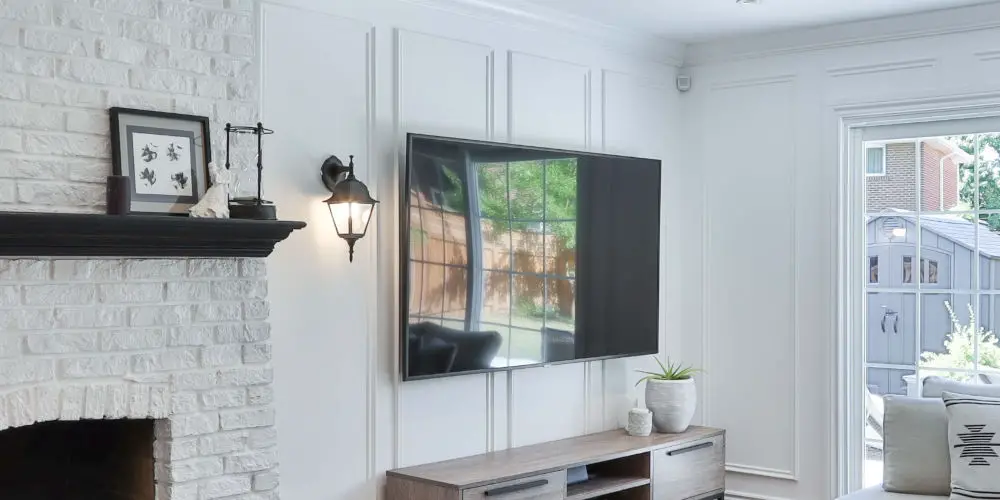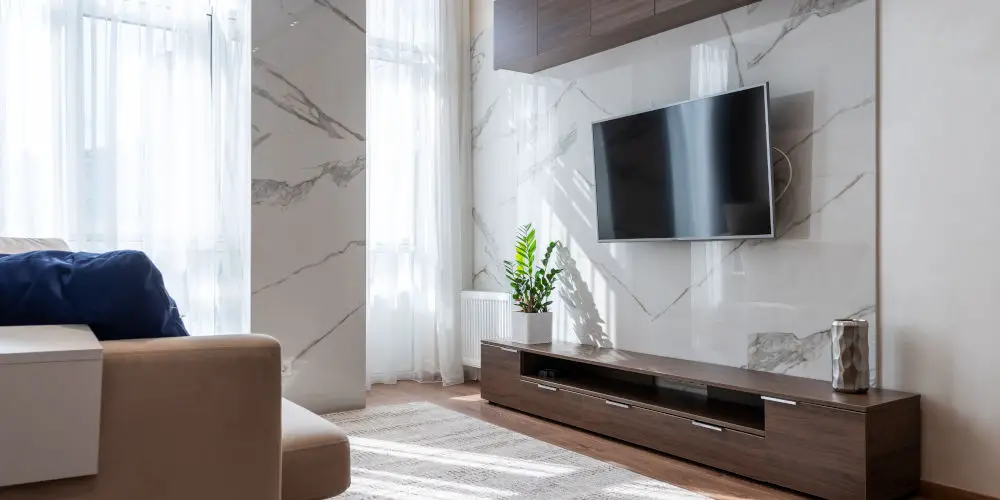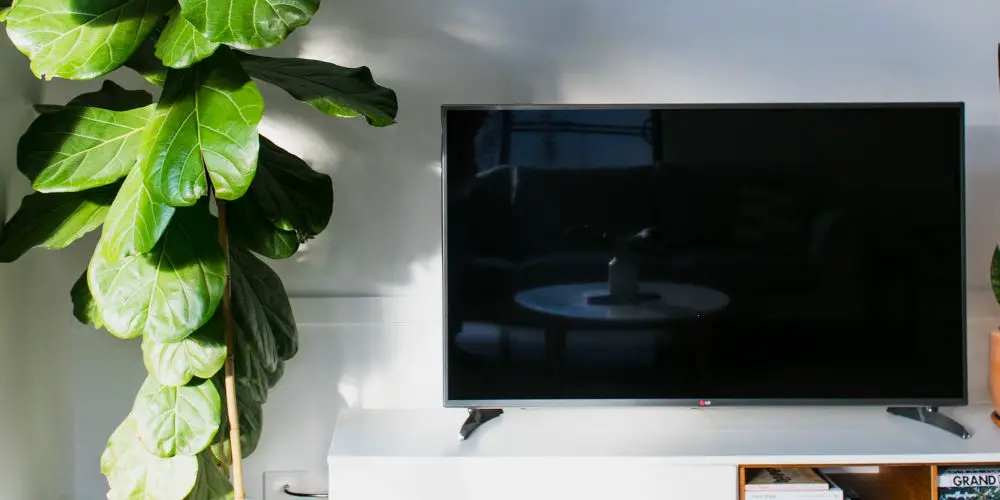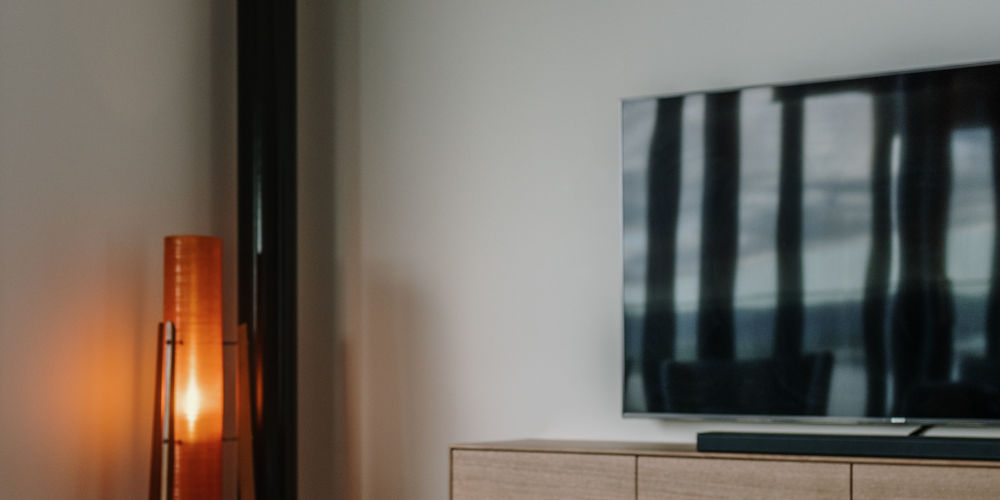What size TV should I buy for my living room?

Fancy knowing the answer to what size TV should I buy? It would make your life far easier when buying your next device. You’d be able to focus on the brand, features, and specs and not will it fix in the room.
The size of the TV you should buy depends on a few factors, such as the size of the room where you’ll place the TV, the viewing distance, and of course, personal preference.
There are several rules of thumb you can follow, which we’ll cover in this article. But we’d also advise visiting a local electronics retailer to see different screen sizes in person to determine the ideal size for you.
So, what size TV should I buy? Let’s explore this question!
Some general guidelines to get started
We recommend choosing a TV size proportional to the distance between your seating area and the TV screen. A rule of thumb is to divide the viewing distance (in inches) by 1.5 to get the recommended TV screen size (in inches).
For example, if your viewing distance is 8 feet (96 inches), then a 65-inch TV screen would be a good choice. Whereas you might struggle to see a 50-inch television.
Remember, this is just a general guideline, not the rules! Personal preference plays an important role in determining the ideal size.
Some people prefer a larger screen for a more immersive viewing experience. Others may prefer a smaller screen that is more appropriate for the room’s size. Ideally, you should choose a TV size that’s comfortable for your viewing experience and fits your budget.

How does room size impact TV size?
Room size has a massive impact on TV size. In a large room, having a tiny television will look out of place, so you probably want to use a larger TV screen. It will fill the space better and provide a more immersive viewing experience.
The opposite is true. Having a massive telly in a tiny room will look weird. So you’ll want to consider how screen size will look in the room and from different viewing points.
Another element to consider is the level of detail you need. In a large room with a small TV, you’ll struggle to see every detail on the screen and have a hard reading text. Both of which will be frustrating.
Choose a unit that’s too big, it may overwhelm the room and be uncomfortable to watch for extended periods. Also, if you sit too close to the screen, you might experience eye strain or discomfort.
So it’s important to balance the size of the room, the viewing distance, and the size of the TV to ensure you have an enjoyable viewing experience.
Is there a perfect viewing distance?
There isn’t a single “perfect” TV viewing distance that applies to everyone. It varies based on personal preference and the size and layout of the room. However, there are some general guidelines that can help you determine a comfortable viewing distance.
As a general rule of thumb, we recommend a viewing distance of about 1.5 to 2.5 times the diagonal screen size of the TV. For example, if you have a 55-inch TV, the optimal viewing distance would be between 2 to 3 metres (6.5 to 11 feet) away from the screen.
You’ll find that this range provides a balance between immersive viewing and comfortable viewing that is easy on the eyes. Some people prefer to sit closer to the screen for a more immersive experience, while others may prefer to sit further away for a more relaxed viewing experience.
You should bear in mind the type of content you’re watching. If you mainly watch films, you might want to buy a slightly bigger sized TV as this will provide you with a better experience.

Can a TV ever be too large for a room?
Yes, a TV can be too large for a room. If the TV is too large for the size of the room, it can overwhelm the space and be uncomfortable to watch. It can also cause eye strain if you have to move your eyes or head too much to see the whole screen.
Where is the ideal TV location in a living room
The ideal spot to place a TV in a living room depends on the size and layout of the room, how you’ve arranged the furniture, and personal preference. However, there are a few general guidelines to keep in mind.
Eye level
Ideally, place the TV at eye level, meaning the centre of the screen should be at the same height as your eyes when you’re sitting down. This helps to reduce neck strain and provides a comfortable viewing experience.
Viewing distance
As a general rule of thumb, the optimal viewing distance is about 1.5 to 2.5 times the diagonal screen size of the TV.
Placement
Find a location in your living room that provides an unobstructed view from the seating area. Avoid placing the TV behind furniture or in a position where people will have to crane their necks to see it.
Lighting
The ideal TV location has minimal glare and reflections. So avoid placing the TV in direct sunlight or a location with bright overhead lighting.
Room layout
Place your television in a location that fits with the overall layout and design of the room. Try not to place it in a location that disrupts the flow of the room or clashes with the style of the decor.
The ideal placement
Ultimately, the ideal spot to place a TV in a living room depends on the specific needs and preferences of the individual. Be mindful of the size and layout of the room, the placement of furniture, and personal viewing habits to determine the best location for the TV.

So, what size TV should I buy?
In summary, the ideal TV size and placement depend on a variety of factors, including the size and layout of the room, personal preference, and viewing habits. It doesn’t matter if you have a HD TV, or a 4K or 8K unit.
Some general guidelines to keep in mind include placing the TV at eye level, at a comfortable viewing distance, and in a location that provides an unobstructed view, and minimizes glare and reflections.
Also, the TV’s placement should fit with the overall layout and design of the room to provide a comfortable and aesthetically pleasing viewing experience. Ultimately, it’s important to consider these factors to determine the best TV size and placement for your living room.
As you now know you what size TV to buy, you might want to read about how to set your new unit up or our article that demystifies common TV acronyms.




